Scientists develop a FAIRY-inspired robot that uses wind and light energy to fly
>
It looks like enough of us believe in fairies after all, but it’s not Tinkerbell who is flying this time.
Scientists from Tampere University in Finland have developed a 0.2-inch (4 mm) robot that uses wind and light energy to soar through the air.
Their ‘flying aero-robot based on light-responsive materials assembly’ – FAIRY – weighs just 1.2 milligrams, meaning it can be blown about by even a gentle breeze.
It resembles a dandelion seed or ‘pappus’, with super-fine bristles poking from two wings which gently flap when activated with light.
The ‘flying aero-robot based on light-responsive materials assembly’ (pictured) – FAIRY – weighs just 1.2 milligrams so can be blown about by even a gentle breeze.

Scientists from Tampere University in Finland have developed a 0.2-inch (4 mm) fairy-inspired robot that uses wind and light energy to soar through the air. Pictured: Tinkerbell
Due to the space between the bristles of a pappus, a swirling ring of air, or ‘vortex ring’, is produced as it flies and increases its drag.
This drag stabilises it as it is blown by the wind, and a similar vortex ring is created downstream of the FAIRY once in flight.
However, when a light is shone onto the robot, this can cause it to unfold or fold its wings, changing the shape of the vortex.
This property can be utilised to control its take-off and landing.
‘Superior to its natural counterparts, this artificial seed is equipped with a soft actuator,’ said researcher Hao Zeng.
An actuator is a device that turns an energy input, like light or electric, into kinetic energy.
Dr Zeng said’: ‘The actuator is made of light-responsive liquid crystalline elastomer, which induces opening or closing actions of the bristles upon visible light excitation.’
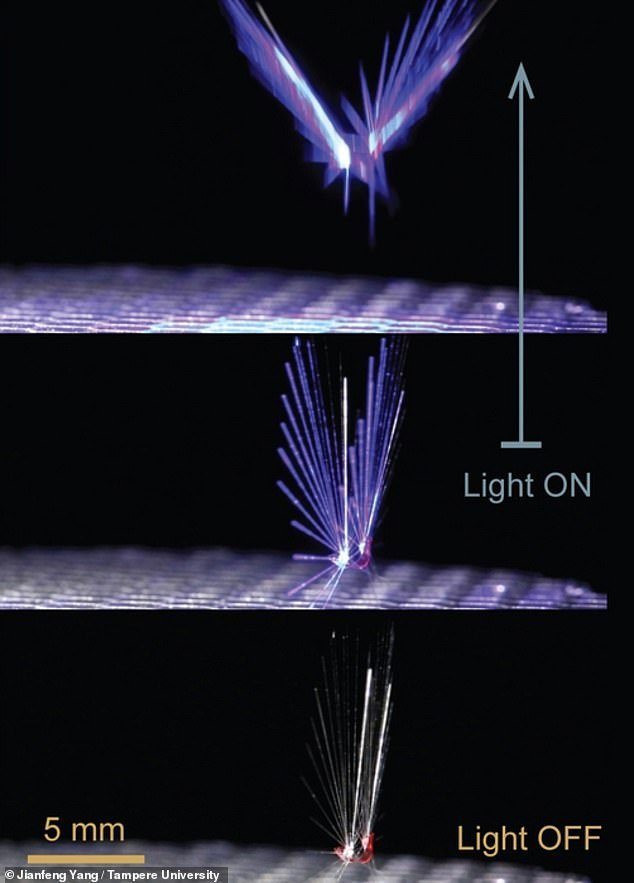
In dark and low wind settings, the FAIRY stays still. When there is enough light, the structure opens its wings automatically allowing flying in the wind flow
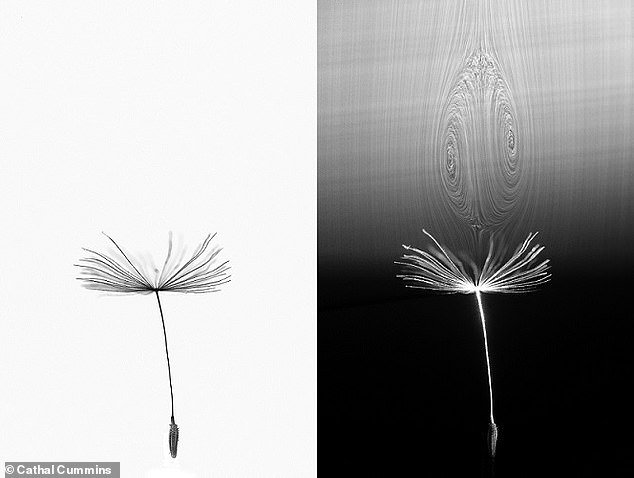
Due to the space between the bristles of a dandelion seed, a swirling ring of air, or ‘vortex ring’, is produced as it flies and increases its drag.
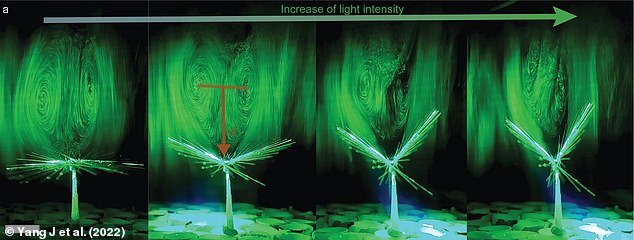
A similar vortex ring is created downstream of the FAIRY once in flight. Pictured: Photographs of the changing vortex ring pattern upon illumination of the FAIRY
In recent years, many research groups around the world have created miniature robots out of ‘soft’ polymers that are responsive to external stimuli.
These include a swimming ‘fish’, walking drug delivery bots and flying bees and flies – all of which move after being shone with a light.
The field of soft robotics was founded on the idea of using more flexible materials to try and make robots modelled on natural forms, for example crabs and cheetahs.
This would make them more dynamic and better able to move in a variety of terrains.
For their study, published in Advanced Science, engineers looked to the humble dandelion clock for inspiration for a new flying robot.
FAIRY only weighs 1.2 milligrams and is highly porous, meaning it can be picked up by a gust of wind and float along easily.
The vortex ring it produces allows it to travel over long distances using just the wind.
‘The fairy can be powered and controlled by a light source, such as a laser beam or LED,’ Dr Zeng said.
Its actuator converts the light energy into kinetic energy, moving the robot’s wings and enabling it to change direction while flying or control its take-off an landing.
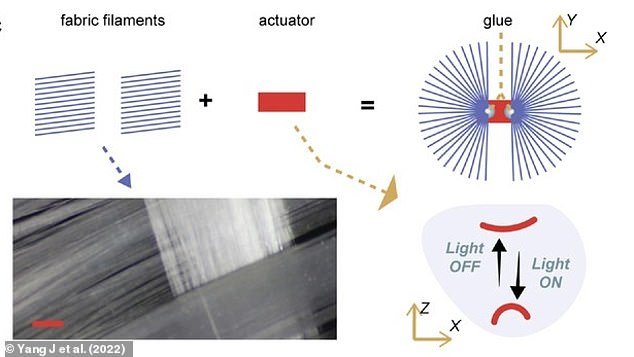
The FAIRY’s actuator converts light energy into kinetic energy, moving the robot’s wings and enabling it to change direction while flying or control its take-off an landing
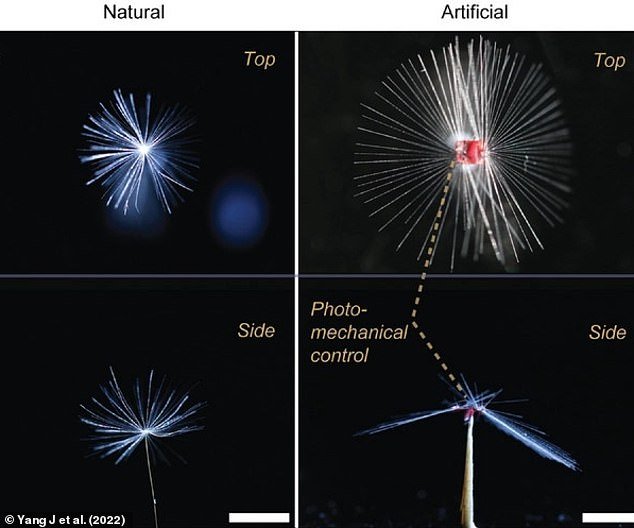
The robot could one day act as an artificial dandelion seed, loaded up with pollen and steered towards plants that need it. Pictured: Top-views and side-view photos of natural dandelion and FAIRY artificial disperser
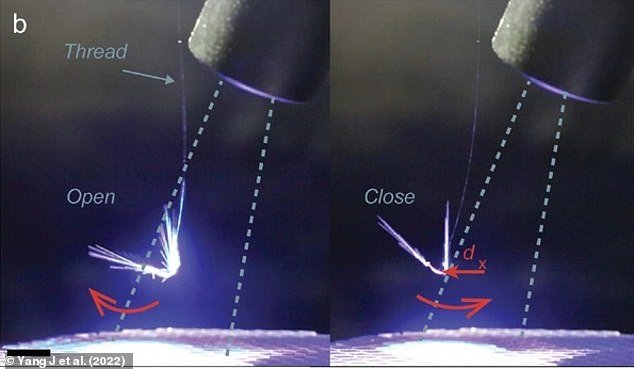
Photos of the FAIRY moving with a light beam through opening and closure of the wings
The researchers now hope to improve the robot’s sensitivity so it can be powered by sunlight as well as that from a laser or LED.
They will also scale up its size to about 4 inches (10 cm) so that it could be used to carry microelectronic devices, such as GPS receivers, or chemical compounds.
The robot could one day act as an artificial dandelion seed, loaded up with pollen and steered towards plants that need it.
Dr Zeng said: ‘It sounds like science fiction, but the proof-of-concept experiments included in our research show that the robot we have developed provides an important step towards realistic applications suitable for artificial pollination.
‘This would have a huge impact on agriculture globally since the loss of pollinators due to global warming has become a serious threat to biodiversity and food production.’
